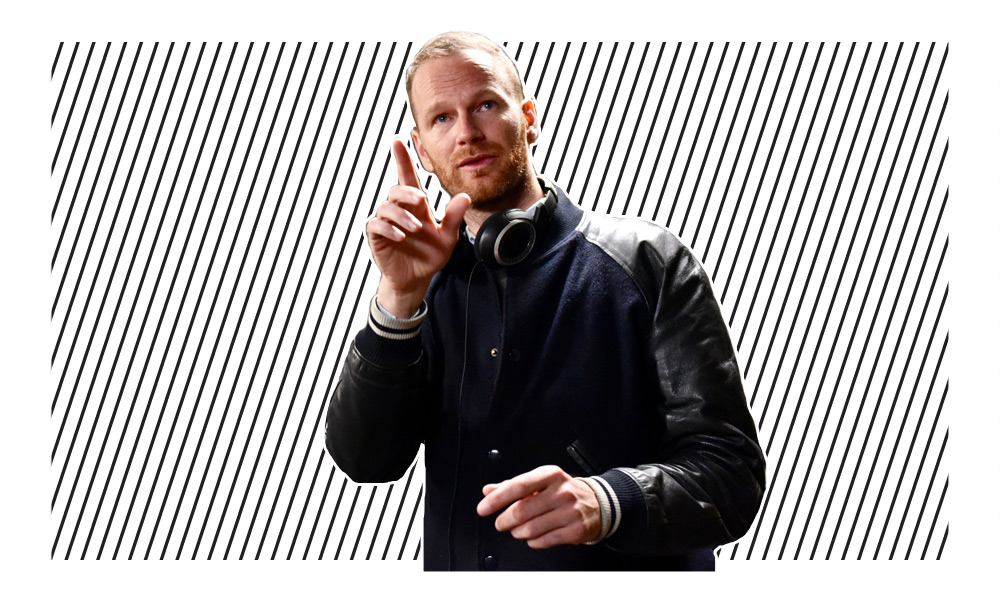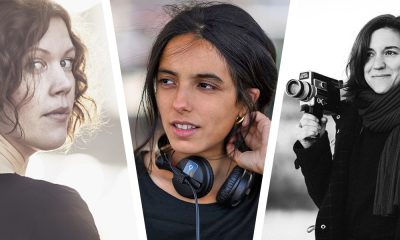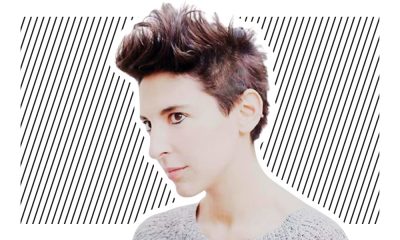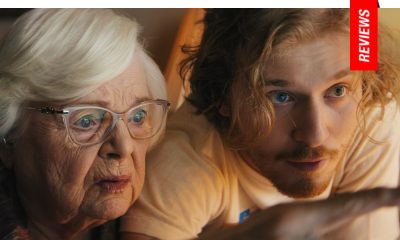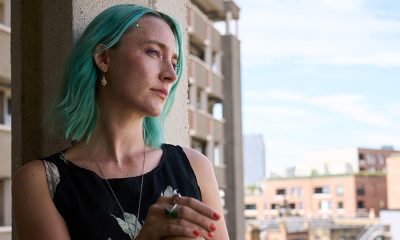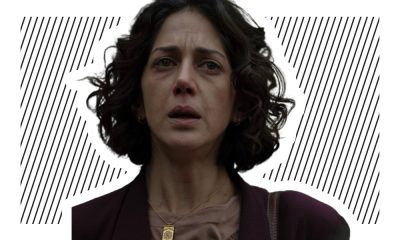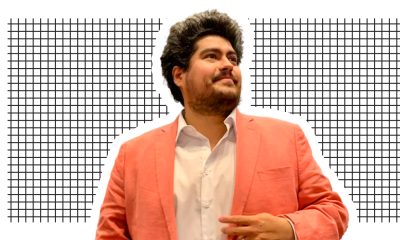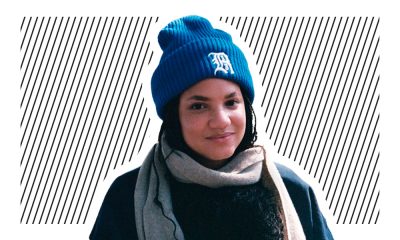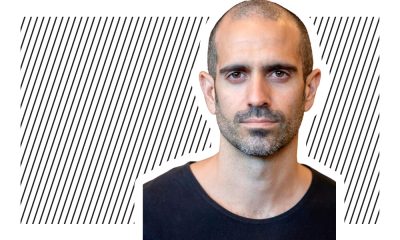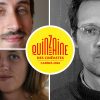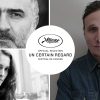Interview: Joachim Trier – Thelma
Not unlike the festival strategy unveiling for Reprise back in 2006, the Toronto International Film Festival was the lieu for the North American premiere to Thelma. Joachim Trier‘s first foray into genre filmmaking after home base dramatic fair in 2011’s Oslo, August 31st and his English language debut in 2015’s Louder Than Bombs. Here’s my sit down with the filmmaker.

Amir Ganjavie: Thelma is very different from both of your previous works, which were more like family dramas while this one is kind of a horror movie. Why did you become interested in horror?
Joachim Trier: I think that in a way what I’m trying to do is to make each film have a different kind of feeling. Basically, I feel that we started out wanting to do more of an expressionistic film that dealt with mystery, horror, and the internal fears of the characters and to find a visually expressive way of doing that. Then before you know it, suddenly we also had a kind of a family drama going on here because it turned into a character-driven piece of storytelling. You know why we wanted to do these types of digitally manipulated and kind of darker nightmarish images that you very often see in more generic movies. However, what I’m always the most interested in is the character in the middle so the character tells me an idea of a coming of age story.
Ganjavie: What was the source of your inspiration? Is it based on a novel?
Trier: No, it’s something which I came up with but I grew up watching a lot of different movies. We watched a lot of Italian giallo. You know, seventies horror movies from Italy. I read a lot of manga when I was a kid like in Japanese comic books, you know Katsuhiro Tomos, Akira and stuff like that. I’m also a big Brian de Palma fan so the whole idea of doing something that deals with suspense really appealed to me. We also shot this in CinemaScope for the first time so I think that there were a lot of sources of inspiration. However, having said that, I didn’t want to make a retro eighties movie. I wanted it to feel like the present day and to have contact with something naturalistic in present-day Norway.
Ganjavie: Why did you shoot it in CinemaScope?
Trier: I thought there was something about this initially vulnerable character of a young woman but then we show this big space around her and slowly she starts expanding in a way and becomes a force. I thought that to shoot a small character in a big city with this rather brutalistic architecture like Oslo needed that big scope. There is also this thing about cinema right now where a lot of people are shooting for television and I think it’s just great to use the whole camera. One of the things that always comes up when we discuss horror movies is how they relate to contemporary fears. For example, horror movies in the fifties related to spies from the Soviet Union.
Ganjavie: In the seventies it was about the fear of feminism. How do you think that your film relates to current fears?
Trier: I’m very interested in your perspective and I agree. I think that Stephen King has pointed out several times that horror films always deal with the fears of the time in which they are made. I’ve been very inspired by films like Romero’s Season of the Witch, which was a great feminist movie, or Rosemary’s Baby, which also deals with the anxiety of the control of the patriarchy. So to get to your question, I think that it’s the anxiety of the self. It’s the fact that your existential identity, your liberated individuality, which is wonderful but at the same time you have to carry the responsibility of the lack of structure and being in the body. That’s what this is. The first thing that we see happening to Thelma is basically that she gets seizures. It’s a horror film about the anxiety of taking responsibility for your own will, your own freedom. So it’s more like “substantial” anxiety. I think that because it’s timeless but I also see in society how the body has become the metaphor for our fears and our sense of identity.
Ganjavie: This movie is also a story of the rite of passage for people to become who they are supposed to be, especially for young women. Here it seems that it happens to her by killing her father. It seems to me that you wanted to suggest that the only way for this girl to be free is to get rid of her father and the religious repression that he represents.
Trier: Well without revealing too much to the viewers I would say that it’s the big drama in the lives of people that I know, this drama of liberation from one’s parents. Freud once said that “mothers are created to be abandoned” and we have that story told a lot but I think that it’s father-daughter story which opens up some possibilities. I won’t say too much but I think that’s an aspect of the story.
Ganjavie: I have a question about the actress. Is it her first performance?
Trier: No, she’s done some work but she’s young. She was twenty-two when we shot the film. Her name is Eili Harboe and she’s remarkable. I think that she’s a star and we’re going to see a lot of her in the future. She’s one of the bravest actress I’ve worked with. She wanted to do her own stunts, like being underwater for a long time doing quite scary things. She had to act with snakes. She went into seizure therapy with a therapist and she tried to learn the technique for having self-induced seizures. She’s just a great actor and has a great emotional accessibility.
Ganjavie: You mentioned the snake scene and the pool scene. How did you have these ideas?
Trier: I was sitting with Eskil Vogt, my co-writer who I always write with, going through the concepts that we liked, and I think that I found there to be something magical about snakes, which also deals with old Norwegian mythology. You know, in Scandinavia they burned witches of until the sixteen hundreds and there was a big European tradition of stigmatizing people who had a sense of otherness to them. I’ve always been attracted to the freaks and the outsiders so I kind of thought there was a mythological power element in a culture that was stigmatized in Christian Norway. There was that sort of mystical “folkloristic” element that I thought was kind of something to draw on the sense of wild nature, the sense of snakes and ice, water, and the seasons. We’re doing a kind of naturalistic horror.
Ganjavie: Coming back to the topic of music and sound, it’s great in this movie.
Trier: To be quite honest, while we were writing this film over the course of several years we listened to a lot of synthesized music from the seventies and eighties. However, when we actually finished the film we felt that so many other people have used that retro eighties synth music. What we did was we actually went and tried to do a more classical score. The music and the film was more of a tourist Bernard Herman, you know, there is a lot of inspiration by Hitchcock. There is romantic classical scoring that you may associate with old Hollywood. We tried to do a modern, more sensitive version of that. There’s a mixture of a lot of music in this one and it carries this film more than anything that I’ve done in the past.
Ganjavie: The locations are fascinating. They are very tuned with the images that you put into the movie.
Trier: Again, it’s the Norwegian nature. It’s what there is a lot of. It’s ice and woods combined with the city. It’s a journey from nature into the city and out again towards nature. Yes, and I do realize that there is a lot of CGI here, though I haven’t seen much of it in your previous work. There are at least two hundred CGI shots in the movie. It’s just a creative opportunity. A lot of the Hollywood CGI that we see these days is very impressive but also very stylized. We wanted to do something more gritty and naturalistic as well as less obvious. That’s kind of difficult because we have these images that are a fantasy that we tried to put into real life. It was a real challenge but it was really interesting. We have eight companies in Copenhagen, two in Stockholm, and one in Oslo that collaborated over long period of time. We actually just finished the film’s CGI and sound four weeks ago. We’ve been in that process for a long time because we don’t have the biggest budget in the world but we want to do something really extravagant and spectacular.
Ganjavie: So you tried to create a new story from the mythology with a combination of mythologies?
Trier: To go back to my earlier answer, it’s a mixture of supernatural cinema from Europe and America but also the old folklore and fairy tales from Norway and H.D. Anderson, the Danish fairy tale writer. He did the Snow Queen and has done a lot of great stories. There is also influence from Japanese comics. We drew a lot from not only reality but also fantasy, letting our imaginations run free.
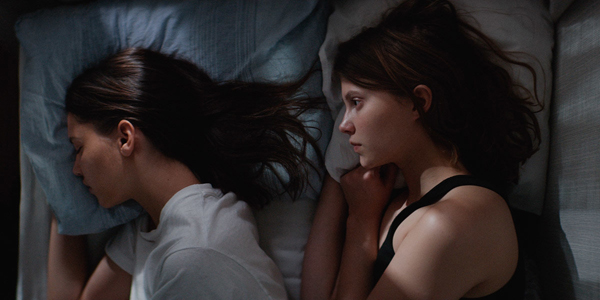
Ganjavie: Louder than Bombs had lots of shots compared to the Oslo, August 31st. This movie seems to be a combination of your first and second movies.
Trier: No, it’s in a way that we’re mixing up something. I think we’re trying formally to do something with more real time and suspense but the movie also has montage sequences. It’s more of a straightforward story that we’re telling but I’m also going back into my first film when I dealt with young characters. Some of the characters and actors on the film are amateurs, you know, in both my first film and this one. Paya, for example, who plays one of the girls in the story, is a musician. She’s never acted before and that spirit of naturally inexperienced acting combined with genre, I thought was a mixture of what I knew from before and something completely new that I haven’t tried before. That’s been the challenge and I hope that the audience will accept that I’m allowed to change and try different things. That’s the fun of filmmaking to me. It’s to try things that I haven’t done before.
Ganjavie: Compared to your first movie, the second movie was a big production but then your third movie is not as big.
Trier: This is a big budget film but in Norway it’s a different big kind of big budget. It doesn’t have the big stars perhaps of Louder than Bombs. It was such a great experience to do Louder than Bombs. It was one of the greatest experiences that I’ve had with actors because the cast was remarkable and I might go back and do films again in English but I felt that this one story in Thelma was more original and unexpected to set in Norway. I never think strategically when I make movies. I’m not smart enough and I don’t think that I should be smart with my career. I always do the film that I want to do right now and where I need to tell that story. For now, that was Norway. Maybe next time it will be another place so I’m very fortunate as a filmmaker because I’ve managed to make all of the films that I’ve written and wanted to do. It’s been a struggle but I’ve never had to cancel a project. I’ve always been able to do the film that I want to do right now and I’ll continue like that. I don’t consider what will make me more famous or make more money. I do what I need to do with my team right here and right now and this is what came out. Sometimes I don’t have the control that I want. I wish that I could create smarter films but, on the other hand, stuff just happens and I follow my ideas. And this was the idea that came up – a lesbian love drama with supernatural abilities in a young woman and I thought “Wow. Okay. Let’s do this.”
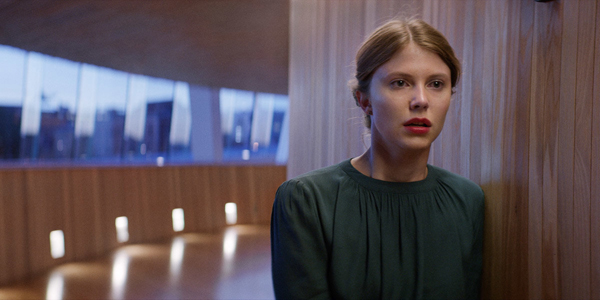
Ganjavie: You mentioned the lesbian romance, which is interesting because some of the dialogue suggests that one might not really love the other because maybe her thoughts have been influenced. That raises some interesting questions about power and the will to desire.
Trier: No, I say that’s the existential question again where I wanted to use her supernatural powers to look at choice and control in relationships. In a strange way it’s a psychological supernatural film. I mean, it’s the anxiety that we are perhaps locked in a narcissistic situation where no one sees us because we can change how they feel about us and I think that’s an interesting nightmare.
Ganjavie: You mentioned that you have a just finished your new film.
Trier: Yes, I’m working on a documentary about Edward Munch, the Norwegian painter, together with a great Norwegian writer named Karl Ove Knausgaard which has been very well received in America, amongst other places. He’s a great writer and doing this film together will be fun and completely different from anything that I’ve done before.
Ganjavie: So this will be a very different trajectory in your work?
Trier: Yes, and I like to curate because sometimes filmmakers don’t like to try or say something new. They want to continue with authorship but I decide to change and to experience with something new, which something I really like. I think it’s something that is in harmony with the idea of the movie, the will to power and wanting not to be bound by the structure that raised us.
The Orchard released Joachim Trier’s Thelma on November 10th in limited release.
Amir Ganjavie, a Ph.D. in communication and culture, is a Toronto-based writer, cultural citric, festival director, community activist and filmmaker. Fascinated by the issue of alternative and utopian space in modern urban settings and cinema, Amir has published several articles on utopia and two books, one on utopia (Le rôle de la pensée utopique dans lâaménagement des villes de demain) and the other on walkable neighbourhoods (Pour une ville qui marche). He has recently co-edited two special volumes on Iranian cinema for film International and Asian Cinema and edited a Humanities of the Other: An essay collection on the Dardanne Brothers (in Persian). Aside from academia, he writes for MovieMaker, Filmint, Mubi, Senses of Cinema, Offscreen and Brightlight. Amir is very active in the community. He serves as the CEO of CineIran Festival and Phoenix Cultural Centre of Toronto. He is also the founding member of NaMaNa Cinema. He has recently directed/produced a long feature film in Canada, named Pendulum. His top 2 theatrical release for 2017: Ildikó Enyedi's On Body and Soul and Michel Hazanavicius's Redoubtable.



